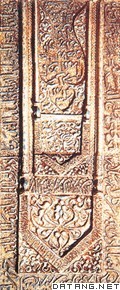1) Xinfa Suanshu


《新法算书》
1.
The Lunar Theories in Xinfa Suanshu;


《新法算书》中的月亮模型
2.
This paper studies the methods of observation and calculation in Xinfa Suanshu, the calculation in Xia oan Xinfa and illustration of Mei Wending a nd Lixiang Kaocheng, compares these five methods and shows their similarities and differences.
《新法算书》分别给出了计算和观测日月食方位的方法 ;王锡阐在《晓庵新法》中详细介绍了计算日月食方位的全部过程 ;梅文鼎和《历象考成》给出了确定日月食方位的作图法。
3) innovation of calligraphy


书法革新
1.
Both of them did a great contribution to the innovation of calligraphy.


颜真卿、邓石如是中国书法史上的两位大家,在书法革新方面有着相同的价值,其影响却不可同日而语,前者世人皆知而后者鲜为人知。
4) new algorithm


新算法
1.
A new algorithm to calculate the near distance spot of adjacent well by using cylinder helix method;
应用圆柱螺线法计算邻井最近距离点的新算法
2.
Design and realization of new algorithm of tangent arc interpolation;


切割线法圆弧插补新算法的设计与实现
3.
Based on property of block boundary nodes, location of contact in them and the viable way to determine the geometrical configuration of interblock void, the new algorithm for contact updating in 2D DEM is proposed, which reflects the inheritance of geometrical configuration changes within one timestep t.
考虑到一个Δt时步内系统几何构形变化并不显著的特点,规定了块体边界节点的性质及其接触的位置排序,并提出了块间空隙几何构形的描述方法,然后基于它们建立了二维离散单元法接触处理的新算法。
6) Hi-tech new arithmetic method


高新算法
补充资料:阿拉伯书法
| 阿拉伯书法 Arabian calligraphy 伊斯兰时代的阿拉伯文字书写艺术。起源于手抄本的《古兰经》。阿拉伯书法具有悠久的历史,而且字体繁多。一般认为,11世纪是划分阿拉伯书法时期的界线,之前为古体时期,之后为新体时期。古体时期的阿拉伯书法以库菲体出现最早,其书法笔画纵向,线条直而棱角分明,有一定装饰味。9~10世纪又一分为二,出现了叶状库菲体和花状库菲体,皆因笔画末端似棕叶状和饰有花头纹而得名。另外,还有一种繁琐而规范的手写体及印刷体,以结体工整圆润,笔画舒展流畅为其特征,有纳斯黑体和斯尔希体等不同字体。11世纪之后,在古体书法继续流行的同时,又相继出现了4种新的字体,即:①穆哈卡克体,风格清秀,笔画纤瘦;②拉伊哈尼体,风格活泼奔放,笔画末端呈鼠尾状;③鲁库阿体,用于书信的书写及手抄本通俗读物;④塔乌奇体,风格庄重大方。另外,还有一些字体流行,如:马格里比体,以活泼潇洒,节奏分明著称;纳斯塔里克体,笔画更加纤细流畅;希卡斯塔体,笔画比较繁琐;加里体,用于公文书写,以及专门用于苏丹签名,形如装饰绘画的图画文字的花字体。阿拉伯书法非常重视文字本身的形式美,因此其书法讲究节奏感、装饰性和纹样。由于是用硬笔在羊皮纸上自右而左横向书写,所以笔画简洁流畅,具有一种曲线的效果。
|
说明:补充资料仅用于学习参考,请勿用于其它任何用途。
参考词条
